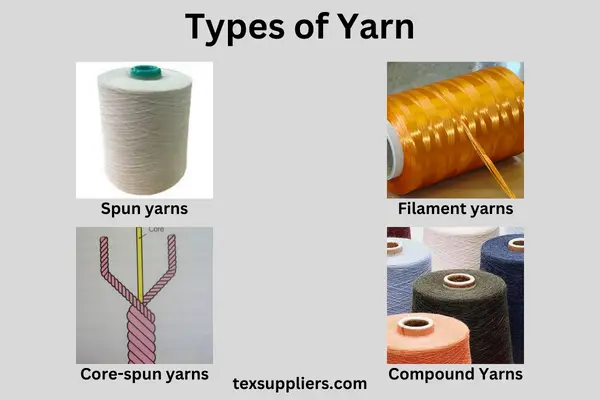Table Of Contents
What is Yarn?
Yarn is an assembled form of fibers that have a substantial length and cross-sections. Yarn is a formation through the spinning process. This spinning process takes fibers, twists, and holds fibers together.

It also acts as an additional strength. Yarn, being the length of fibers, remains in an interlocked continuous length. Besides, yarn is available to produce in crocheting, embroidery, knitting, and ropemaking. Yarn is composed form of plant fiber and animal fiber.
What is Yarn Made of?
Yarn is made from different fibers- natural and synthetic. If we talk about any plant fiber, then we have to say the name of cotton, and bamboo. Alongside these natural fibers, there are synthetic polyester fibers, for instance, wool, cashmere, Angora, and Silk. Cashmere is a harvested form from goats while angora comes from rabbits. Silk is an insect larva.
Before going to the description, this is essential to know that fibers that occur in a natural form, remain in a short length. They are called staples. Meanwhile, synthetic fibers are those that may get cut into a uniform length. However, organic plant-based fibers are cotton and silk. They are not as warm as the alternative animal-based ones.
Types of Yarn and Its Making
Yarn types based on the yarn structures are as follows:
Spun yarns:
Spun yarns are short and can be even longer staple fibers. Spun yarns have better handles, feel-good skin, and sensible strength. So, spun yarns are made from staple fibers.

Filament yarns
Filament yarns are continuous filament fiber made. It can be both monofilaments as well as multi-filament. These yarns are flat and textured. Fabrics that use filament yarns are excellent in terms of strength.
Core-spun yarns:
Core-spun yarns have an outer fiber wrapping around the yarn’s central core. It can be useful in both knitting and woven fabrics. For this, a greater elasticity is required.
Compound Yarns:
If we say how yarn is made, then we must acknowledge what compound yarns mean to us. These compound yarns use multiple strands within the same structure.
Other Yarn Types and How They Made of
Among the natural yarn fiber types, there are:
· Wool: Woolen yarn, made from sheep fleece, are suitable for making close-fitting outfits, and heavy blankets.
· Alpaca: Alpaca is also a natural yarn fiber made. It has warm density even than sheep’s wool.
· Cashmere: Cashmere yarn is an animal hair fiber made. It comes from the undercoat of the Kashmiri goat.
· Mohair: Mohair is also an animal hair fiber made. It obtained the form from the Angora goat. Like Cashmere, it also has specialty hair fiber.
· Angora: Angora is also a type of wool fiber. It comes from the Angora rabbits’ fur.
· Llama: Llama fiber is one of the hollow cores. It has superior insulation capabilities. It grows a coarse wool coat.
· Cotton: Cotton yarn is made from white-colored fluffy fiber. This fiber is from the cotton plant.
· Silk: Silk comes from the protein fiber that has only the fibroin.
· Linen: Linen is a fiber sourced that comes from the flax plants’ stems.
· Bamboo: Bamboo yarn is cellulose-made textile.
· Hemp: Hemp is fine fiber sourced from the hemp plant named “Cannabis Sativa.”

So, it becomes an evident fact that natural fibers who represent the majority, “cotton, flax, wool, and silk” are the earliest yarn samples. We can say that synthetic fibers have not appeared until the decade the early 1920s. The first synthetic yarn was rayon. Rayon is a cotton and wool fiber-made product. Here the information is that organic plant-based fibers are more breathable and absorbent than the animal-based alternative.
Raw Materials of Yarn Making
Around 15 different types are there to make yarn. Natural fibers are animal plant obtained. Mostly, they have applications in weaving. When cotton gets matured, it gets gathered from the cotton boil. Yarn is made of cotton in the case of the natural setting. In fact, the best-selling fiber is now Cotton in developed countries. There are also other synthetic fibers that get combined in the outselling.

Fibers which we take from the plant leaf are applicable for rope. Plant fibers are acetate and linen.
Natural Fibers
- Acetate fiber: Acetate fibers are made from cotton linters. It is also made from wood pulp.
- Linen: It is made from flax which is generally a vegetable fiber.
Synthetic Fibers
Synthetic fibers are polymerized chemical-made and thick solutions. They include nylon, polyester, acrylic, spandex, triacetate, and polyolefin. New synthetic fibers that combine the different polymer qualities can get produced through a chemical process.
- Acrylic: It is warm and lightweight. Also, acrylic is quite similar to synthetic yarns.
- Polyester: It is a blended form of natural fibers. Also, polyester reduces shrinkage and adds strength.
- Rayon: One of the synthetic fibers (earliest as we mentioned before). Rayon is quite similar to nylon. It is breathable in nature in a shiny form.
- Nylon: Nylon is a user form to imitate silk. It is shiny and smooth.
- Viscose: Viscose is a substitute for silk with a better drape ability and
- hand feel.
Conclusion
Yarn is a natural or synthetic fiber-made material strand. In clothing, there is a process named spinning that creates yarn. The yarn has the most uses in the weaving and knitting processes. Yarns are popular for their strength, regularity, and hardness. Genetic engineering has widespread developments to play with fibers’ properties. In this fiber-to-fabric process, yarn-making remains in the middle ground. Meanwhile, the extracted fibers are there to produce yarns. To make yarn from multi-ranged fibers, devices are essential tools. Devices like spinning wheels and takli are major of them.
















Comments - 00
Leave A Reply
Thanks for choosing to leave a comment.